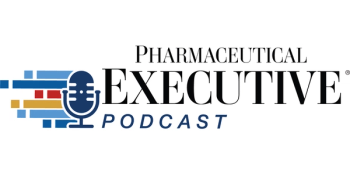
Mim8 Demonstrates Promising Results in Pediatric Patients with Hemophilia A
Data from the Phase III FRONTIER3 trial found that 98% of caregivers prefer Mim8 for hemophilia A over other treatments.
Results from the Phase III FRONTIER3 trial found that Novo Nordisk’s Mim8 demonstrated zero bleeds in a majority of patients between one and 11 years of age with hemophilia A. These data, which were presented at the 18th Annual Congress of the European Association for Hemophilia and Allied Disorders, showed that Mim8 was well-tolerated and efficacious after 26 weeks of administration, according to the trial investigators.1
“Managing hemophilia, A in young children can be a complex balancing act of delivering ongoing care, minimizing time out of school, and ensuring their physical, emotional and social wellbeing is optimized,” lead investigator Johnny Mahlangu, director of the Hemophilia Comprehensive Care Center, Charlotte Maxeke Johannesburg Hospital at University of the Witwatersrand in Johannesburg, South Africa, said in a press release. “The FRONTIER3 interim analysis data are encouraging for families with young children and indicate that Mim8 could offer an efficacious, convenient, flexible dosing option for children, helping to reduce the treatment burden so families can live more normal lives.”
FRONTIER3 evaluated the efficacy and safety profile of Mim8 as a prophylaxis treatment in 70 children between one and 11 years of age, including 14 with inhibitors and 56 without inhibitors. Consisting of two parts, the first phase consisted of all participants receiving once weekly Mim8 prophylaxis under the skin for 26 weeks. In part two, participants chose between receiving Mim8 prophylaxis once monthly or continuing to receive Mim8 prophylaxis once weekly for an additional 26 weeks.
Results found that Mim8 demonstrated an estimated mean annualized bleeding rate (ABR) of 0.53 and a median ABR of zero. Additionally, 74.3% of participants had no treated bleeds, including all children with inhibitors. Further, 45% opted for once monthly dosing after 26 weeks of treatment. Patient-reported outcomes indicated reduced treatment burden and improved quality of life, with 98% of caregivers preferring Mim8 over prior treatments.1
According to the Centers for Disease Control and Prevention (CDC), the exact number of people living with hemophilia in the United States is unknown. The median diagnosis age is 36 months for mild hemophilia, eight months for those with moderate hemophilia, and one month for those with severe hemophilia. Two out of every three babies with hemophilia have a family history of it.
CDC statistics also indicate that 69.7% of patients are diagnosed with hemophilia less than a month after birth. An additional 15.6% are diagnosed between one and six months of age, 7.1% between seven and 12 months of age, 4.7% between 12 and 24 months of age, and 2.8% in prenatal patients.2
“We see the daily challenges faced by children living with hemophilia A and their caregivers. The FRONTIER3 data represent another step forward in our ambition to provide treatment options that place equal focus on safety and efficacy without requiring a compromise on treatment administration and quality of life,” said Ludovic Helfgott, EVP rare disease, Novo Nordisk, in the press release. “Mim8 is designed with the aim to offer treatment flexibility based on individual lifestyles, so it is encouraging to see that patients and caregivers in these analyses prefer Mim8 over their previous treatment. At Novo Nordisk, our commitment to the rare bleeding disorders community compels us to reduce limitations in the lives of children with hemophilia and their families.”
Novo Nordisk plans regulatory submission in 2025, with further data from the FRONTIER program to be shared at upcoming congresses and publications through 2026.1
References
1. Novo Nordisk A/S: Once-weekly Mim8 is well-tolerated and efficacious in children living with haemophilia A with and without inhibitors. Novo Nordisk. February 7, 2025. Accessed February 7, 2025. https://www.novonordisk.com/content/nncorp/global/en/news-and-media/news-and-ir-materials/news-details.html?id=915260
2. Data and Statistics on Hemophilia. CDC. Accessed February 7, 2025. https://www.cdc.gov/hemophilia/data-research/index.html#:~:text=A%20CDC%20study%20that%20used%20data%20collected,United%20States%20are%20living%20with%20the%20disorder.
Newsletter
Lead with insight with the Pharmaceutical Executive newsletter, featuring strategic analysis, leadership trends, and market intelligence for biopharma decision-makers.





